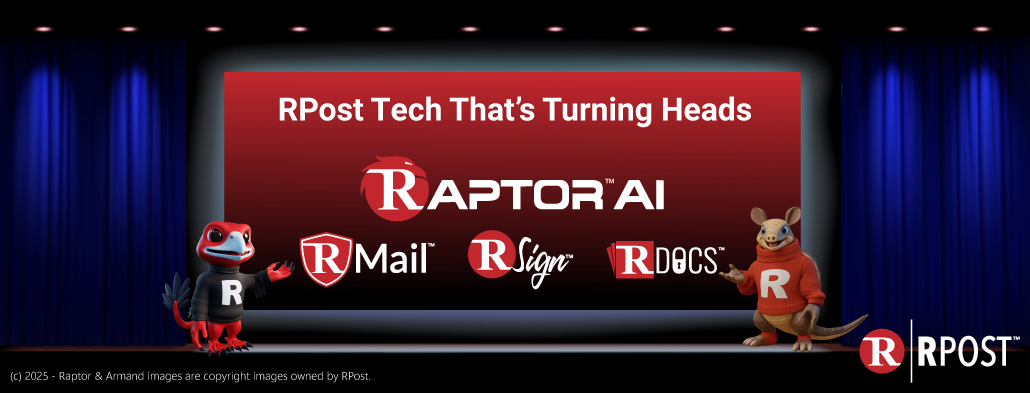
Rocky the Raptor here, your friendly neighborhood cybersecurity evangelist from RPost. At the recent Gartner IT Security Conference I attended, a hot topic sparked discussion:
“Are Humans Trainable to Spot AI-Powered Impersonation Lures?”
The short answer - It depends… on:
History tells us that some humans are trainable, provided they have sufficient motivation. But here’s the kicker: what companies are doing today is not working. Phishing simulation emails, boring security awareness modules, or those once-a-year compliance quizzes? They’re losing effectiveness.
Worse, attackers are no longer just sending typos and bad grammar. With AI in their toolkit, cybercriminals can generate perfectly written, hyper-personalized lures that feel eerily legitimate. The more humanlike AI impersonation becomes, the less effective “spot the red flag” training is.
Micro-Drips & Motivation
Some say micro-dripping training (tiny doses over time) might help. And maybe it does -- if your employees are engaged, motivated, and aware of the real personal consequences of failing.
But let’s be real: most people just want to get their job done. Clicking a convincing email that looks like it came from your CEO or supplier isn’t because they’re careless; it’s because the lure is just that good.
New Technical Approaches Are Needed
RAPTOR™ AI offers that approach. It doesn’t rely on whether a human can spot the lure. Instead, it works before the lure is even crafted. Here’s how:
Think of it as pulling the rug out from under the criminal before they can even set the trap.
Beyond Humans: RDocs & Double DLP
RDocs™ is like document armor. If a sensitive doc is en route and RAPTOR AI sees it might land in a compromised account, it can auto-lock the file before a cybercriminal’s eyes ever land on it.
Now, traditional DLP works at your perimeter with these outlined combos:
But what about these messy realities?
That’s where RPost’s Double DLP™ AI shines. It lives outside your endpoints, in the ether, and can:
It’s like having a second set of AI eyes, making judgment calls humans simply can’t make in real time.
Bottom Line
Some humans can be trained. But let’s face it - most humans want to focus on their jobs, not on being amateur cyber sleuths. Plus, AI impersonation lures are getting too good for the average person to reliably spot.
That’s why the future isn’t about training harder, it’s about training smarter -- and sprinkling in AI assistants to back us up.
That’s where RPost comes in. With RAPTOR AI, RDocs, and Double DLP, we’re not just asking humans to get better at spotting threats. We’re removing the threats before they can even reach humans.

December 12, 2025

December 05, 2025

November 21, 2025

November 14, 2025

November 07, 2025